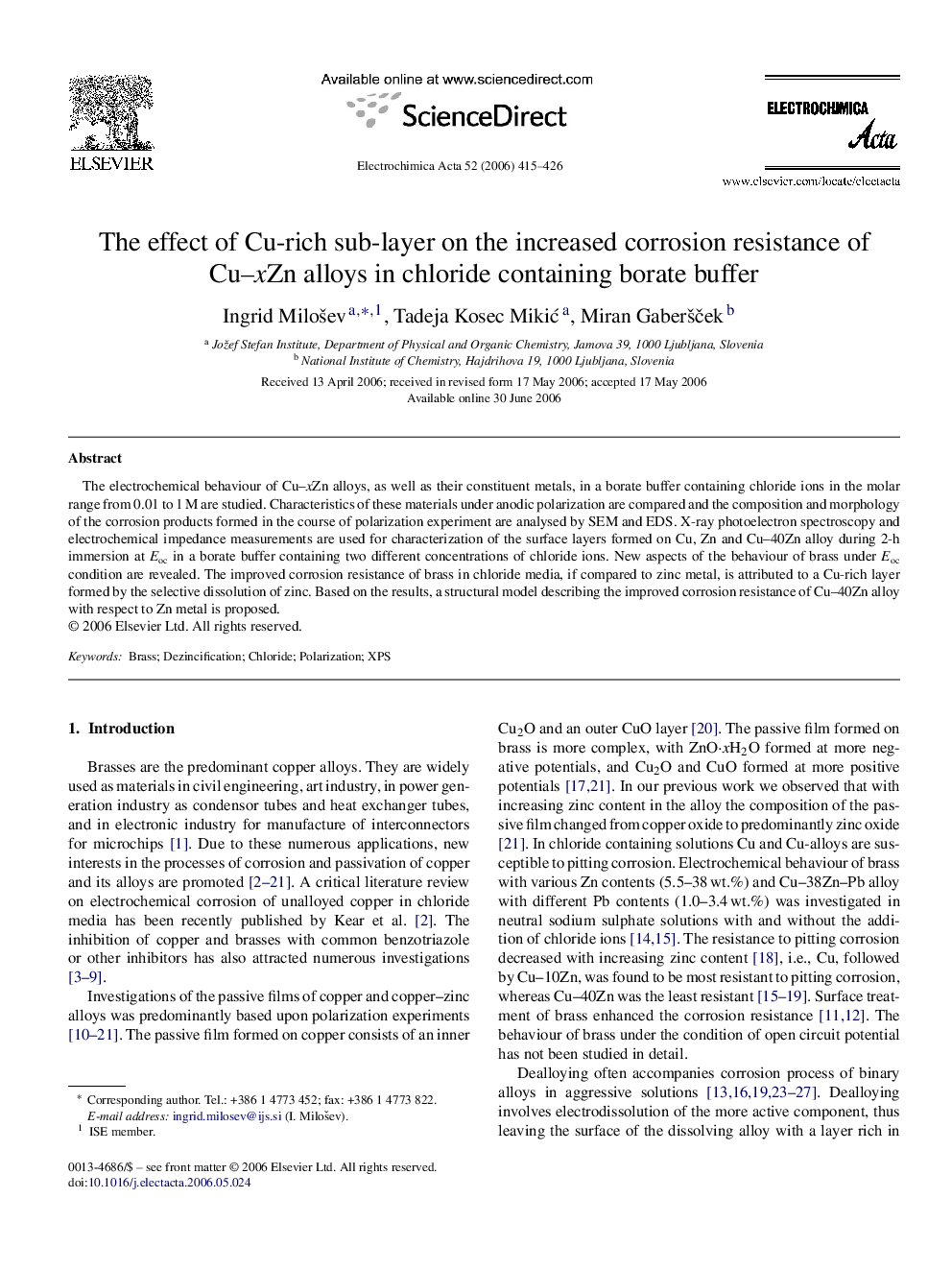| Article ID | Journal | Published Year | Pages | File Type |
|---|---|---|---|---|
| 194327 | Electrochimica Acta | 2006 | 12 Pages |
The electrochemical behaviour of Cu–xZn alloys, as well as their constituent metals, in a borate buffer containing chloride ions in the molar range from 0.01 to 1 M are studied. Characteristics of these materials under anodic polarization are compared and the composition and morphology of the corrosion products formed in the course of polarization experiment are analysed by SEM and EDS. X-ray photoelectron spectroscopy and electrochemical impedance measurements are used for characterization of the surface layers formed on Cu, Zn and Cu–40Zn alloy during 2-h immersion at Eoc in a borate buffer containing two different concentrations of chloride ions. New aspects of the behaviour of brass under Eoc condition are revealed. The improved corrosion resistance of brass in chloride media, if compared to zinc metal, is attributed to a Cu-rich layer formed by the selective dissolution of zinc. Based on the results, a structural model describing the improved corrosion resistance of Cu–40Zn alloy with respect to Zn metal is proposed.
